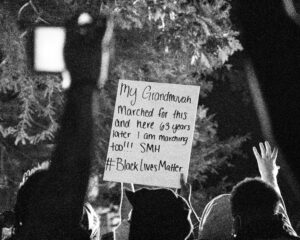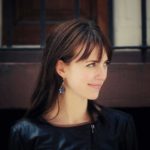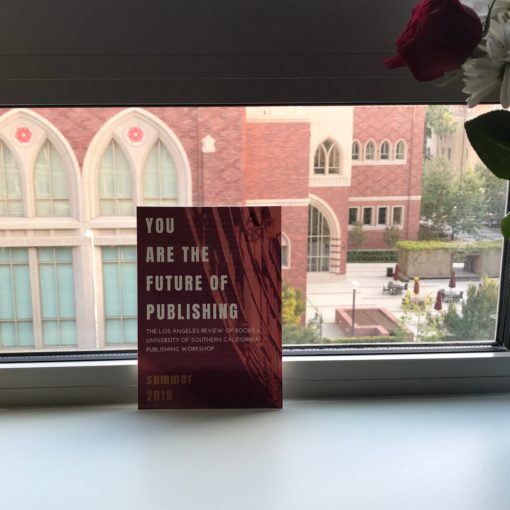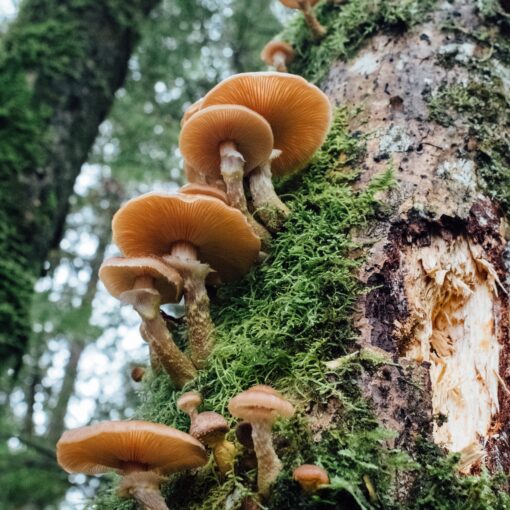“There is nothing new
Under the sun,
But there are new suns.”
—Octavia E. Butler

On March 12, Dr. Brian Jones, Associate Director of Education at the Schomburg Center for Research in Black Culture and PhD in Urban Education from the Graduate Center, facilitated and moderated “Activism, Archives, and Education,” a panel that served as a hopeful reminder of what that history makes possible, and the ways that people can engage with it. Hosted by the PublicsLab, the panel featured Anthony Arnove, co-founder of Voices of a People’s History of the United States and co-director of “The People Speak”, Zakiya Collier, Digital Archivist at the Schomburg Center for Research in Black Culture, Ansley Erickson, Historian at Columbia University’s Teachers College, and Dominique Jean-Louis, Public Historian and doctoral student at New York University. The panelists discussed their first encounters with history and described its ongoing role in their public-facing work, activism, and education.
As the panelists conversed about their current projects and hopes for the post-pandemic future, I was struck by how they all work to give people a different, more inclusive, and engaging experience of history, whether through schools, museums, libraries, web archives, and/or political activism. As a high school student, history that focused on dates, battles, and ‘great’ white men left me feeling alienated from the subject. But history as a discipline has diversified to include new feminist and postcolonial perspectives, and Brian, Anthony, Zakiya, Dominique, and Ansley are pushing back against the unhelpful, unhealthy, flattening, and dehumanizing ways that history is often taught. It was moving to hear them speak about how history can be used as a tool for imagination, community, political action, self-knowledge, and change. Extraordinarily, they have all continued to incorporate and learn from history under the dire circumstances of the pandemic. They spoke about the barriers to archival work and described their hopes for the future.
The Benefits of a Historical Perspective
Brian asked the panelists to describe how they first got into public history. Strikingly, not one of them studied history as an undergraduate.
Anthony’s understanding of history’s value changed radically when he found himself alongside other organizers reading about history. When Zakiya was a child, her father handed her Dr. Carter G. Woodson’s The Mis-Education of the Negro. He said that what she was learning in school was not the history he knew to be true as a Black person in the world and in America. She began to think about the way narrative shapes what people know and think they know about themselves. Ansley’s childhood circumstances generated her interest in schools as social, political, and cultural institutions. And as a doctoral student studying U.S. History, Dominique finds that a historical grounding shifts the way we see the contemporary. To her, knowing that something was here before means there could be something different in the future—history makes it possible to imagine and build new realities.
Their examples show it’s never too late for any of us to incorporate history into our personal lives, activism, and research. History can help us learn about the roots of inequality in our world today. How do these inequalities present, and how do we challenge them? History makes it possible for us to think about these questions with an intense focus on people, humanity, and story.
The Archive as a Meeting Place
With these origin stories in mind, Brian asked the panelists to describe history’s role in their current projects, and to share their hopes for the future. What can voices from the past contribute to our time now?
Anthony discussed what it’s like to bring U.S. history to life through public readings of primary source materials. He’s committed to helping people come together to hear ideas collectively in public settings. “The way history is taught is so disempowering and designed to reinforce the worst elements of racism, exploitation, and oppression that are rampant in our society,” he said. He believes that public history can be part of untangling that. When the Voices project works, it shows people that history is not just a book on a shelf—it’s a meeting place.
Zakiya and Ansley also help schools give people ways to interact with history. Zakiya’s work as a Digital Archivist focuses on the #SchomburgSyllabus project, which “aims to document 21st century global Black life by continuing the development of the #HashtagSyllabusMovement web archive collection and connecting today’s digital creations with the Schomburg Center’s historical collections.” She engages with web archives, preserves syllabi, and works to document the ways that scholars, activists, and the general public are creating online educational resources to contextualize current events, many of them stemming from a legacy of self-directed education initiatives, especially within the Black community.
Ansley said that conceptually, the archive is a potential meeting place between scholars, high school students, teachers, and parents. Many people can see points of connection with archival materials. She notices a real, shocking disconnect between the rich local histories in places like Harlem that are documented, and the young people and teachers who are in classrooms there, who might not be able to access these histories. She described her work on the Harlem Education History project as “entirely haunted” by the ghost of herself as a young teacher in a Harlem high school in the early 2000’s. Two years after she left that position, she learned that the school was the site of the Harlem Nine protest in 1958. It was boycotted by Black mothers protesting segregation and inequality. Looking back, Ansley wonders what she might have been prompted to revisit in her own thinking had she known more about the school’s history, and she now works to connect her students with these stories of protest and resistance to give them a better understanding of the structures they inhabit.
Activating the Archives: Making Archival Work More Welcoming
Brian asked the panelists how they hope activist archives will impact young people, noting that it can be depressing to see how long certain fights have been going on. “It’s validating to realize that someone articulated what you’ve been feeling eighty or one hundred and eighty years ago. Sometimes, that’s depressing,” he said. It can be difficult to encounter a text in the archive that feels like it could’ve been written yesterday. “It’s not inspiring to see your school under siege for decades…but it’s helpful for students to see that they’re not responsible for this,” Ansley said. One goal she has is to use archives to help young people see they are part of unequal and racist school systems so that they can work to change them. Her hope is that archives can help students see their schools as historic places, not just a place people want to erase.
Dominique said that people tend to trust museums more than they trust schools, politicians, and the news. One way to empower young people is to give them opportunities to curate. Each year, the Schomberg invites teens to curate their own exhibitions from the archive. “We’re saying, here are the treasures of the institutions we have invested in. Here are tools you can use to make something, too.” Museums also encourage different modes of learning, especially visual learning. Schools tend to cater to reading/writing learners and aural learners. Visual learners can progress through the school system feeling unintelligent, but museums, which are highly visual, can remedy this sense of inadequacy and help visual learners thrive.
In “The ‘Intimidating’ Archives: Teaching Graduate Students Historical Research Methods,” Margot Note writes about discovering that “students viewed archives as intimidating.” She realized that it’s possible for students to earn a bachelor’s degree without using a library frequently or learning how to conduct research, and that information seeking is a “subjective process, one in which people approach with prior knowledge, strong opinions, and differing levels of cognitive development.” Though none of our panelists were history majors, they were still able to find new purposes and perspectives within the archives. They now work to make archival work less intimidating in creative and resonant ways in the hopes of giving young people what they didn’t have: the conditions for transformative experiences in the archive.
If we are to activate the archive, we must tune into its ability to both intimidate and empower. Archival work can affect people in real, unexpected, emotional ways; the objects created and archived can directly reflect our perceptions about who we are, expressing, containing, and reflecting sensitive elements of our identities and histories. Through archival work, we encounter preserved memories, layers of perception, tools of imagination, and histories of resistance and resilience alongside reminders of grief and mourning. If we are to help people “remember with the archive,” as Zakiya expressed it, and use artifacts of cultural memory to empower, we must be prepared for this meeting space and these artifacts to invoke a range of experiences and welcome all of them. After all, as Zakiya noted, materials tend to meet people where they are—it’s never too late to turn to history.

Madeleine Barnes is a poet, visual artist, and English PhD student. Her research focuses on women’s domestic embroidery and poetry as forms of public and private resistance in Early Modern England. A co-curator of the Lunar Walk Poetry Series, Poetry Editor at Cordella Magazine, and Publicity Assistant at Press Shop PR, Madeleine is dedicated to showcasing the work of underrepresented groups within and outside of academia, dissolving boundaries between art and scholarship. Her debut poetry collection was published by Trio House Press in July 2020, and she has taught creative writing and humanities research at Brooklyn College and NYU, where she earned an MFA in Creative Writing.







